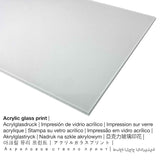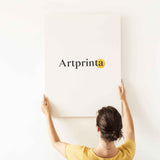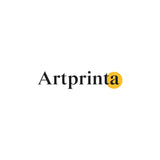Edwin Lord Weeks, 1885 - The Rajah Starting on a Hunt - fine art print
Tax included. Shipping calculated at checkout.
Article specs
The 19th century piece of art was painted by the American painter Edwin Lord Weeks in 1885. The version of the artpiece was painted with the size: 39 9/16 x 32 in (100,5 x 81,3 cm). Oil on canvas. was used by the American painter as the medium of the masterpiece. The artwork can be viewed in in the The Metropolitan Museum of Art's digital collection. This public domain artwork is included with courtesy of The Metropolitan Museum of Art, New York, Bequest of Maria DeWitt Jesup, from the collection of her husband, Morris K. Jesup, 1914. The creditline of the artwork is: Bequest of Maria DeWitt Jesup, from the collection of her husband, Morris K. Jesup, 1914. Moreover, alignment of the digital reproduction is portrait and has a side ratio of 1 : 1.2, meaning that the length is 20% shorter than the width. The painter Edwin Lord Weeks was an artist from United States, whose style can mainly be classified as Romanticism. The artist was born in 1849 in Boston, Suffolk county, Massachusetts, United States and died at the age of 54 in 1903.
Available materials
We offer a range of different materials and sizes for every product. We allow you to pick your favorite size and material among the following product individualization options:
- Poster print (canvas material): The poster print is a UV printed flat canvas with a granular structure on the surface. It is particularly used for putting your art replica in a custom frame. Please keep in mind, that depending on the absolute size of the poster we add a white margin 2-6cm round about the painting to facilitate the framing with a custom frame.
- Aluminium dibond print: These are metal prints on aluminium dibond material with an outstanding effect of depth, which makes a modern look throuch a non-reflective surface. This print on aluminium is the most popular entry-level product and is an extremely contemporary way to showcase fine art reproductions, because it draws focus on the replica of the artwork.
- Printed acrylic glass with a glossy effect (with real glass coating): The print on acrylic glass, which is often referred to as a plexiglass print, will transform your favorite original work of art into lovely home decoration. The work of art will be custom-made with the help of modern UV direct print technology. The real glass coating protects your chosen art replica against light and heat for decades.
- The canvas print: The canvas print, not to be confused with a painting on a canvas, is a digital copy printed from a UV direct printing machine. Hanging your canvas print: A canvas print has the advantage of being relatively low in weight, meaning that it is quite simple to hang your Canvas print without the use of any wall-mounts. A canvas print is suitable for all types of walls.
Legal note: We try our best to describe the art products as exact as it is possible and to illustrate them visually on the various product detail pages. At the same time, the colors of the print products, as well as the print result may differ somehwat from the image on the device's screen. Depending on the screen settings and the condition of the surface, not all color pigments are printed 100% realistically. Given that all our art reproductions are processed and printed by hand, there may as well be minor discrepancies in the exact position and the size of the motif.
The product specifications
| Print prodct: | fine art print |
| Reproduction: | digital reproduction |
| Production process: | digital printing |
| Provenance: | made in Germany |
| Type of stock: | production on demand |
| Intended usage: | wall art, home design |
| Alignment of the image: | portrait format |
| Aspect ratio: | length : width - 1 : 1.2 |
| Aspect ratio interpretation: | the length is 20% shorter than the width |
| Materials you can choose: | acrylic glass print (with real glass coating), poster print (canvas paper), canvas print, metal print (aluminium dibond) |
| Canvas print (canvas on stretcher frame) options: | 50x60cm - 20x24", 100x120cm - 39x47" |
| Acrylic glass print (with real glass coating) size variants: | 50x60cm - 20x24", 100x120cm - 39x47" |
| Poster print (canvas paper) size variants: | 50x60cm - 20x24", 100x120cm - 39x47" |
| Aluminium dibond print size options: | 50x60cm - 20x24", 100x120cm - 39x47" |
| Art print framing: | not available |
Work of art background information
| Title of the painting: | "The Rajah Starting on a Hunt" |
| Artwork classification: | painting |
| General category: | modern art |
| Artwork century: | 19th century |
| Year of creation: | 1885 |
| Artwork age: | over 130 years |
| Artwork original medium: | oil on canvas. |
| Dimensions of the original work of art: | 39 9/16 x 32 in (100,5 x 81,3 cm) |
| Exhibited in: | The Metropolitan Museum of Art |
| Museum location: | New York City, New York, United States of America |
| Museum's website: | www.metmuseum.org |
| License of artwork: | public domain |
| Courtesy of: | The Metropolitan Museum of Art, New York, Bequest of Maria DeWitt Jesup, from the collection of her husband, Morris K. Jesup, 1914 |
| Creditline: | Bequest of Maria DeWitt Jesup, from the collection of her husband, Morris K. Jesup, 1914 |
The artist
| Name: | Edwin Lord Weeks |
| Also known as: | e.l. weeks, ed. weeks, e. l. weeks, Weeks Edwin Lord, Weeks, Edwin Lord Weeks |
| Gender of the artist: | male |
| Nationality: | American |
| Professions: | painter |
| Country of the artist: | United States |
| Artist classification: | modern artist |
| Art styles: | Romanticism |
| Lifespan: | 54 years |
| Born: | 1849 |
| Born in (place): | Boston, Suffolk county, Massachusetts, United States |
| Year of death: | 1903 |
| Died in (place): | Paris, Ile-de-France, France |
© Copyright protection | Artprinta.com (Artprinta)
Original information about the work of art from The Metropolitan Museum of Art website (© Copyright - by The Metropolitan Museum of Art - www.metmuseum.org)
Boston-born and Paris-trained, Edwin Lord Weeks was a leading expatriate painter, illustrator, photographer, writer, explorer, and collector as well as the first known American artist to visit India. This painting depicts preparations for a hunting expedition at a palace in Ajmer, Rajasthan. Likely dating from the artist’s 1892-93 trip to the country, he described the palace façade in his published accounts as "completely covered by tiers of projecting windows . . . wonderfully light and airy in effect." The striking period frame is not original to the painting, but suggests the "Orientalist"-style setting that Weeks favored for his work.














